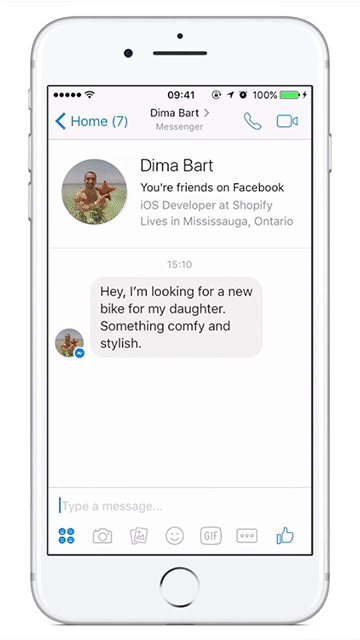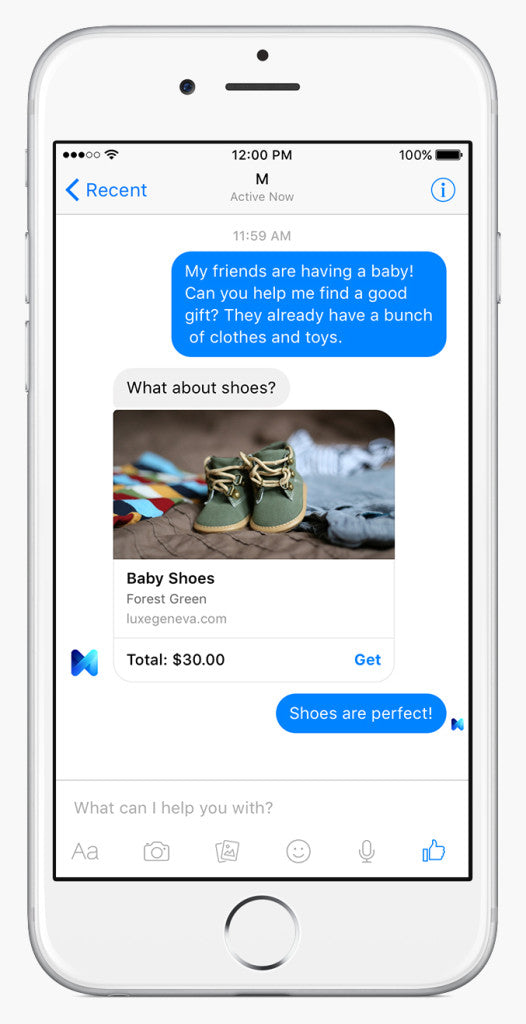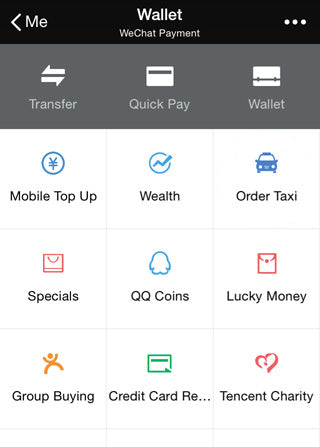Be where your customers are.That’s long been the first rule of survival for any business.
And for the past decade that meant establishing a presence on social networks—Facebook,Pinterest,Twitter—while keeping an eye on the horizon of these public platforms for new opportunities.
It also meant delivering excellent customer experiences on mobile devices when4 out of 5 American consumersshop on their smartphones.
But over the last two years,messaging apps have started to outpace social networkswhen it comes to where we spend our time.

Source:商业内幕
And it’s not surprising.
We go on social networks to discover news and content, to share our thoughts and stories, and connect with other people. But it’s in messaging apps where we do all thatplusmake plans, come to decisions and become active participants in personal conversations.
That’s what makes chat as an interface for commerce—or "conversational commerce”—a natural next step.
What is "Conversational Commerce"?
Conversational commerce is transforming the "messaging app" as we know it into so much more.
Imagine a world where you could open a messaging app—on your choice of device—and type or speak:
“I need a prom dress for next week, blue or white, under $200.”
In seconds, you get a message back—“Here is your blue dress”—with a link to a personalized product recommendation along with express shipping selected, your choice of color, and your size already accounted for, which you can then pay for, and track the shipping status, without ever leaving the conversation.
From a single sentence, your unique needs have been translated into a purchase.
确定是否有什么你不能说r you were interacting with a bot or a human the entire time.
This is just one example of conversational commerce in action and how it's changing the way we buy things— the way your business interacts with its customers.
Messaging Apps as a Channel to Communicate With Customers
Chat is already a popular channel for customers to engage with a business in private.
In fact,live chat has a 73% customer satisfaction rate, the highest rated even compared to traditional channels like email (61%) and phone (44%).
But as popular messaging apps like Facebook Messenger expand their functionality, they will grow to become channels that enable a more seamless customer experience from product discovery to payments to tracking the status of orders to customer service.

Companies like Hyatt and Walmartare already testing out the upcoming Facebook Messenger for Business and fielding more inquiries than ever through the platform.
Messaging apps create a private line of communication between a business and its customers, which is a lot better than addressing negative complaints in a public forum like Twitter.
Within the contexts of these conversations, you can even cross-sell and upsell by recommending products that match your customer’s unique needs, similar to the brick and mortar experience of engaging with a rep who’s an expert on your product catalogue.
Access your products from your phone's keyboard with Shopkey!
Download Shopify by Shopify (FREE) and put your Shopify store’s product catalogue in your phone's keyboard. Share products with customers as easily as you'd add emojis in all your conversations, on any mobile app.Messaging Apps as a Way to Pay
Payments are at the heart of all forms of commerce, whether business-to-consumer, business-to-business or peer-to-peer. As such, it’s also one of the areas of focus in this shift towards conversational commerce.
Both Facebook Messenger and Snapchat, among others, have been experimenting with payments through chat.
Snapchat’s Snapcash, for example, was their first foray into peer-to-peer payments, which let you send and receive money without having to leave the conversation.

Facebook Messenger also rolled out its own payments feature in the U.Sthat works much the same way.
While the uses right now don’t stray far from paying a friend back for dinner last night,Facebook Messenger for Businessaims to have companies conducting a large part of the experience between businesses and customers—from first touch to point of sale—through Messenger.
Messaging Apps as Your Personal Assistant
On the consumer side, it’s the new concierge services enabled by conversational commerce that will really change the way we buy.
If you’ve ever hired a virtual assistant then you understand what this does to your purchasing process—all the pre-purchase research, placing an order and even making the payment can be handed off to your VA.
But the "virtual assistant” as a jack-of-all-trades freelancer has already evolved into a variety of concierge-style services —fromMagic, which promises “do-it-all” task fulfillment via SMS, toZirtualwhich connects you with one dedicated, skilled VA for your startup.
So, what’s next? Using all the information about you—your shipping address, interests, relationship status and more—to further streamline the process withtext-based assistants.
Facebook’s M, the company’s new Messenger-based assistant, aims to mix human and AI task fulfillment that leverages what Facebook already knows about you, and the context your share with it, to serve your needs better.

Unlike Siri, Google Now, Cortana and other AI assistants, Facebook M will also be powered by humans and empowered by Facebook Payments to take purchase decisions from product discovery to placing an order.
Let's say Mother’s Day slipped your mind, and you’d like to order some last minute flowers for your mom.
You google around for "flower shops near me", looking specifically for same day delivery and Dahlias (her favorite). You find a store, and submit your credit card and shipping info to pay. This is what many still do today.
Instead, imagine this entire process unfolded as a conversation, not unlike one you'd have with a rep inside a physical store, where you simply say: "I need flowers delivered for Mother's Day. She likes Dahlias."
Missing information that couldn't be gleaned through your request could be picked up through the natural flow of a conversation, but at the end of it all you'd have a link to an order that you could pay for through the same messaging app where you’d also get notifications on its shipping status.
Now imagine a conversation like this with several brands in the same list of contacts as your friends and family.
Messaging Apps as Your Small Business Assistant
Messaging apps don't just offer concierge-style services for consumers. Businesses can benefit too. Through a mix of automation and input from the owner, messaging apps can also carry out tasks between different applications that entrepreneurs use everything.
Instead of bouncing between different tabs—your website dashboard and an ad manager—to run a campaign, short-staffed business owners can get an ad out for a new product or sale on the go without having to drop everything they're doing.
Sound too good to be true? While business applications for messaging apps are still uncommon, they do exist. They do work. And they're helping business owners earn back their most valuable resource: time.

Hire Kit, your own virtual employee, for free!
聊天工具通过短信、Facebook Messenger or Telegram to delegate time-consuming tasks and help you run your online store—from running Facebook ads to sending "thank you" emails to customers.
Messaging Apps as a Medium For Content
Messaging apps have often been pushed to the side asthe epitome of “dark social”: channels where attribution and tracking were inherently difficult, if not impossible.
And yet Snapchat has been developing Discover as a way to complement its photo-sharing experience with branded content.
BuzzFeed has also beenexperimenting with WhatsApp share buttonson mobile, which they claim hasattracted more clicks than their Twitter share button.
But a more interesting example of content consumption in the context of a conversation comes from publisher Quartz, whichrecently released an appthat turns the way you consume news into a back-and-forth exchange.
/cdn0.vox-cdn.com/uploads/chorus_asset/file/6029493/quartz-app.0.gif)
One tidbit of news elicits a response from you, which the Quartz bot replies to accordingly. The chat interface makes reading the news an interactive experience, one that’s likely unique for every reader as it gives the consumer control.
And when you consider how sponsored content and native advertising harness content for marketing, you can imagine the potential that exists for brands to serve up personalized, branded content in this format for consumers.
But all of this isn’t entirely novel—not on an international scale. Just look at China where mobile commerce has long been a huge part of daily life and where one app rules it all.
Messaging Apps as Your App For Everything?
We can speculate all we want about the future of conversational commerce. Or we can look east where WeChat—a popular messaging app in China—has already entrenched itself as the go-to app for everything.

If you’re among WeChat’s649.5 million monthly active users, and have tied your credit card info to your WeChat Wallet, then you’re able to do the following without ever leaving the app:
- Hail a cab
- Order food
- Book a flight
- Pay a friend
- 买电影票
- Play games
- Meet new people
- The list goes on
For a while now, WeChat has been the center of mobile commerce in China and, contrary to its name, much more than "just a chat app".
On Chinese New Year, for example, WeChat gamified the Chinese money-gifting tradition withRed Envelope, encouraging a flood of new users to join the platform and sign up for WeChat payments to participate.
While a WeChat-like culture is less likely in countries with a more diverse ecosystem of separately owned apps (Uber, Paypal, Facebook Messenger, etc.), the powerful APIs being built for these apps mean it’s very possible for them to plug into a single interface.
In fact, in the U.S you can already order an Uber through Facebook Messenger by clicking on an address. And that’s just one integration that’s shortening the distance between making a plan and making it happen.
The Era of Conversational Commerce Is Already Here
Conversational commerce is an exciting shift in the world of tech and business.
The convenience this affords consumers, from removing the burden of pre-purchase research to making payments only a few taps away, will build upon the already existing foundations laid by mobile and social commerce—in a big way.
In a word,conversational commerce is bringing commerce into the familiar and personal context of messaging apps, transforming the customer experience by making it a whole lot more convenient for both businesses and their customers alike.
If you're looking for it on the distant horizon, you're looking the wrong way. Because the era of conversational commerce is already here.
Further Reading:7 Must-Have Shopify Appsthat will help your Shopify store thrive in the era of conversational commerce.

About The Author
Braveen Kumar is a Content Crafter at Shopify where he develops resources to empower entrepreneurs to start and succeed in business.
Follow @braveeenk

